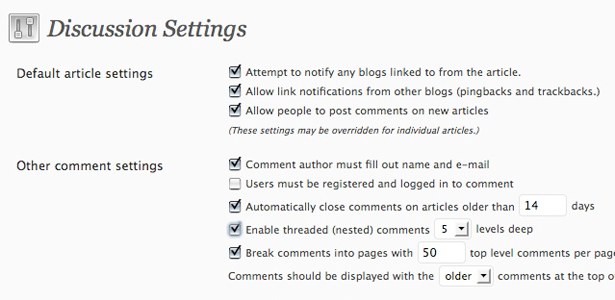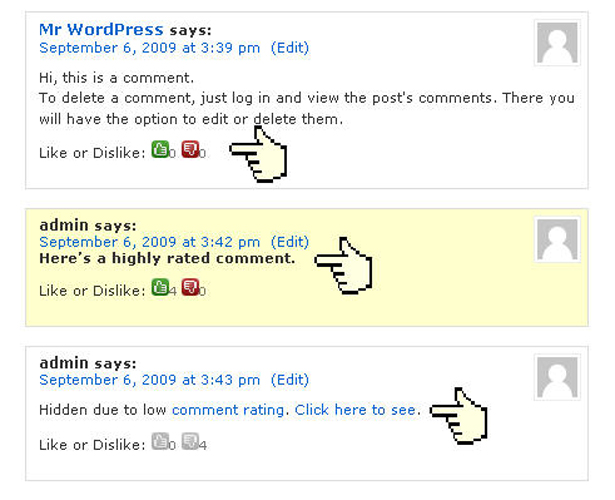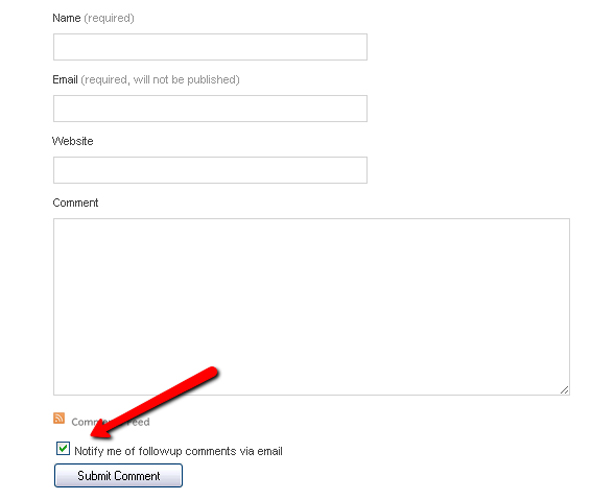 In general, bloggers focus on traffic for their blogs; after all, numbers of visits and page views are easy to quantify and are useful if you are looking for advertisers.
In general, bloggers focus on traffic for their blogs; after all, numbers of visits and page views are easy to quantify and are useful if you are looking for advertisers.
However, the most successful bloggers will say that collating these figures is not what's important; rather, creating a community around a blog is the essential part.
The first step to creating this community is to attract high-quality comments.
To help you do this, we've laid out some key factors to keep in mind. If you have others in mind, please suggest them in the comments below...
Engaging Readers Through Content
This is the most important step. Unengaging content will not generate comments, no matter how many plug-ins or theme hacks you implement on your blog.
Ask Open Questions
People love to give their opinion and share their knowledge on specific topics. Give them the opportunity to do so by asking open questions like, "What do you think of the MySpace logo redesign?" or "Which software would you recommend for invoicing and why?" You'll get more feedback from this than from inspiration posts or simple articles, and maybe you'll learn something, too.
Write Controversial Articles
This is a sure way to get comments, but be delicate. If you have a strong opinion on a topic, be bold and write away. That said, don't be insulting or make every post controversial, which would be tiring for all participants. Finally, know your limits to avoid potential lawsuits.
Managing Comments
Keep comments under control, and be cautious of spam. The following should be helpful with this.
Reply to Comments
Visitors who make the effort to leave a comment appreciate recognition. Replying to all comments, at least those that deserve a reply, is encouraging and shows cares, and it increases the likelihood of future interaction with readers.
Fight Spam
Set up Akismet on your blog. The plug-in will rid your blog of most spam and save you time on moderating. In the past year alone, Akismet has saved me from 76,000 spams comments; if you factor in manual deletion at 3 seconds per spam comment, that's about 633 hours. Also, make sure to regularly check the spam section of your blog's comment management area to look for false positives.
Moderate Comments Effectively
While Akismet works quite well, it doesn't detect every type of spam, nor can it sniff out every type of troll. Finally, never let people start flame-wars in your comment section.
Have a Comment Policy
While you don't necessarily have to write one, letting viewers know what is acceptable on your blog is good practice. Be prepared to handle any situation that may arise, and stick with whatever policy you establish; this will save you time in the end.
Close Comments on Old Posts
Leaving the comments area on old posts active requires much more maintenance and isn't a good idea if you want to keep everything clean. To close comments on old posts, in the WordPress admin area, go to Settings → Discussion → Other Comment Settings, and check the box for "Automatically close comments older than ×× days" (filling in the desired time limit). By popular choice, 14 days seems to be a good deadline.

Promote Active Commenters
No matter how useful your articles, blog readers who take action after reading one are in the minority. Show them some love, and make sure they have incentives to comment again in future.
Display Recent Comments in the Sidebar
Expose the latest comments to point out articles that are currently active, and also to show who is participating in the conversation. This is fairly easy to do, but if you are not comfortable hacking your WordPress theme, then you can use this plug-in.
Reward Good Comments
There are several ways to reward good comments. You can send the author an email of congratulations, quote their comment in a blog post or simply retweet what they wrote. If your readers know that there might be a reward for commenting, then they will more likely take the time to craft their thoughts.
Show a List of Top Commenters
Listing top commenters in your sidebar is another way to show appreciation, and it encourages others to comment. There is a plug-in for that, too.
Encourage Interaction Among Commenters
Getting reactions to articles is great, but getting readers to interact with each another is even better. It is the best way to generate discussion and create a real sense of community.
Set-Up WordPress Threaded Comments
Threaded comments will enable in-depth conversations to build in your comment area. With WordPress 2.7, this feature is built in, although you must still activate it if your theme doesn't support it. Setting it up can be a bit tricky, but Otto Destruct has a good tutorial.
Install a Comment Rating System
An awesome commenting system is what helped Reddit to become so successful. With a similar system on your blog, readers will be doing part of the moderation work for you. WordPress has a great plug-in if you want this feature on your blog: Comment Rating.
Let Readers Quote Each Other
The Quote Comment plug-in will assist commenters to quote directly from a discussion thread.

Make Your Comments Area Sticky
Enlisting regular commenters is the best way to keep a discussion moving. Below are some tools to help.
Comment Subscriptions
Let commenters know when a reply has been posted on one of their comments. This will bring them back to your website to contribute further. The conversation will really develop with this plug-in on your blog.
Display an RSS Feed for Comments
This feature has been built in to WordPress for a long time, but it is not displayed in every theme. If your theme doesn't include it, you can follow these steps to provide an RSS feed for each post's comments.
Thank Commentators
The WordPress plug-in "Thank Me Later" automatically sends an email to readers after they write their first comment on your blog. Used as is, I find it to be a bit invasive. However, you could easily offer a freebie that is accessible only through the email that would make things much friendlier.
Add dofollow to Comment Links
This plug-in will definitely bring commenters back, especially if they are bloggers who are looking for link juice to their own website. But be careful, because it will probably also attract spam. To implement it, check out the DoFollow plug-in.

Make the Comments Area Attractive
In addition to all of these tips, improving the UI of the comments area is also important and will make comments more readable.
Different Layout for Author's Comments
Distinguishing between the statuses of commenters will make this section more scannable, and it will show readers that you are participating in the conversation. Setting this up is fairly easy. Just tweak your comments' PHP file; Matt Cutts explains how.
Display Avatars
Avatars let readers show a bit of themselves on your blog. There are two popular ways to add avatars in WordPress: Gravatar and Twitter. The WordPress Codex explains how to set up Gravatars, and Smashing Magazine goes over Twitter avatars.
Separate Comments From Pingbacks
Pingbacks show that your blog is connected to other blogs and is therefore popular. However, they can also interfere and make the conversation stream less readable. I'd suggest removing pingbacks from the body of the comments and grouping them together at the end. This tutorial explains how to do that.
For professional WordPress Themes, check out Elegant Themes
Written and compiled exclusively for Webdesigner Depot by Mirko Humbert. Mirko is a graphic and web designer and blogger from Switzerland. When he is not working for his clients, he blogs on Designer Daily and Typography Daily.
How do you attract more comments on your blog? What type of comments do you appreciate most?

















